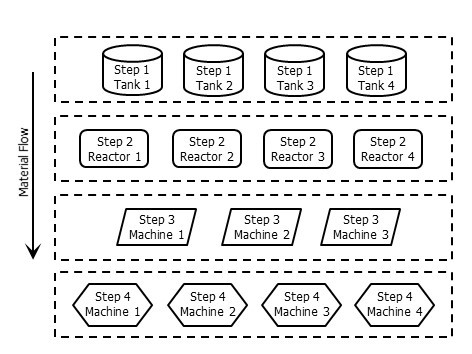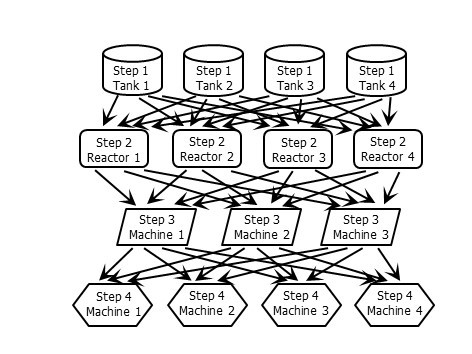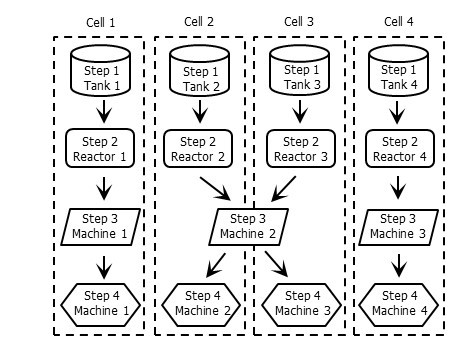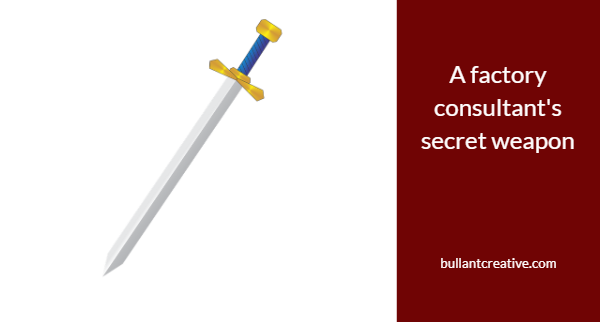Factory consultants in the process industry can make a lot of money by leveraging a single high-powered tool called Virtual Cells.
Consider this typical process industry footprint¹;

The perceived need for maximum flexibility will often motivate factory designers to specify as many links as possible as shown below;

There is also a general business perception that this flexibility maximises asset utilisation and minimises costs, although the opposite is true.
In this arrangement, there are 192 (i.e. 4 X 4 X 3 X 4) possible flow path combinations. As a result quality and costs suffer because;
- there are effectively 192 different processes that make root cause analysis very difficult.
- new products will be designed to take advantage of this flexibility; increasing complexity and reducing average instantaneous rates and efficiencies throughout the factory.
- performance improvement becomes very hard to achieve due to a lack of repeatable performance history on each of the 192 processes
- WIP is used to manage sequencing issues and this makes visual flow management and automatic pull systems hard to implement.
- operator familiarity and cross-training on the different process combinations becomes difficult to maintain because of the sheer number of different processes.
- the ability to change paths when equipment fails means that there is less motivation to find root causes, further eroding long-term performance improvement.
A detailed review of the schedule sequence, product mix, and product design can identify opportunities to create virtual cells (example shown below).
This work is not easy and requires a broad business commitment to better factory performance. Marketing, product development and even sales will be asked to support activities like product design changes and the deletion of low-performing products in the interest of aligning the factory to simpler, virtual cells.

The creation of virtual cells (in this case we have gone from 192 processes down to 4 virtual cells) delivers the following advantages;
- costs reduce, and Return On Assets (ROA) increases, due to higher instantaneous rates and efficiencies.
- downtime and other performance data can be assigned to just 4 virtual cells making root cause analysis easier to achieve.
- flow becomes easier to visualise and manage.
- flow is more continuous, with a minimum WIP for sequencing and therefore lower handling losses and costs.
- quality improves because variability is reduced and feedback is more immediate.
- performance improves with higher quality and targeted operator training
¹ These diagrams are taken from King, Peter L., Lean for the process industries: dealing with complexity. 2009 Taylor & Francis Group.

